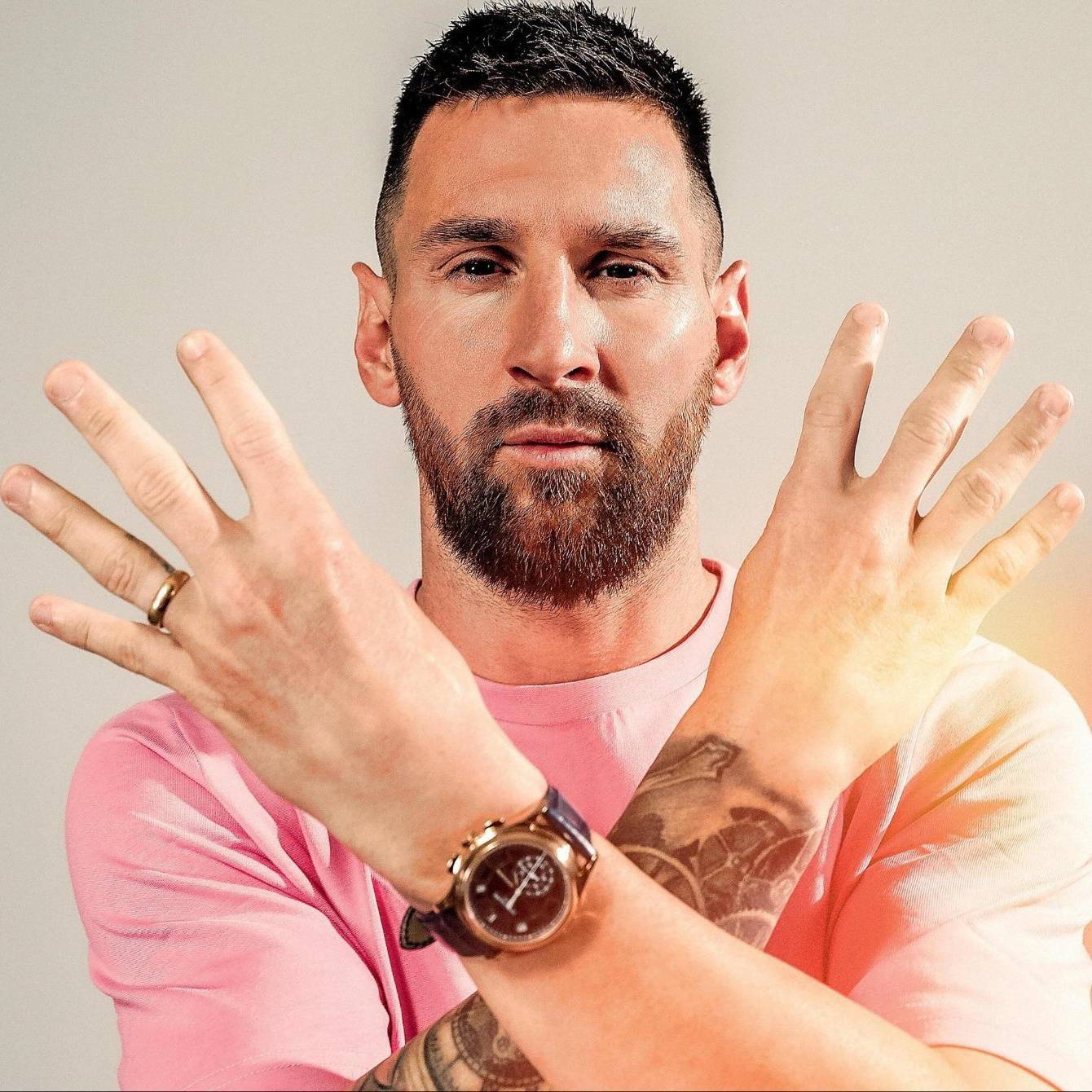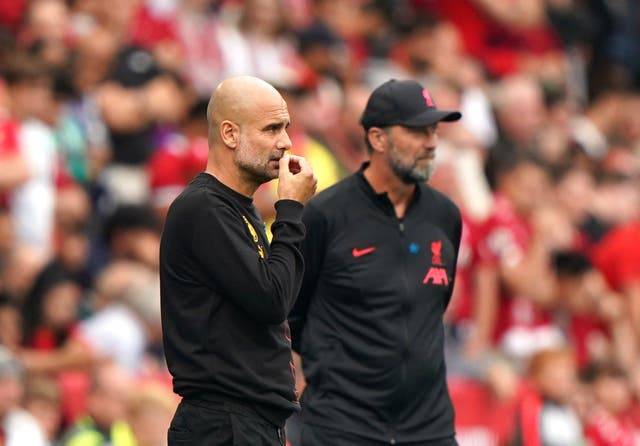In 2021, Pep Guardiola was reflecting on an epic managerial rivalry that then only lasted a mere eight years. “He made me a better manager,” he said of Jurgen Klopp. When he registered his greatest achievement since leaving Barcelona, it owed something to Klopp, too.
In swift succession, his captain lifted the Premier League, the FA Cup and then the Champions League. A decade after scoring for Klopp in a Champions League final at Wembley, Ilkay Gundogan struck twice for Guardiola in an FA Cup final at Wembley. Gundogan felt like a footballing soulmate of Guardiola – as well as a neighbour in the same deluxe Manchester apartment block – but a diplomat had links in each camp: Klopp often texted his former midfielder congratulations when Manchester City won something, just as he got in touch when Liverpool drew Guardiola’s team in the Champions League in 2018.
Gundogan is gone now – to Guardiola’s old club and spiritual home, Barcelona – but he remains an example of how the Catalan has been influenced by the manager who has beaten him most often. As Guardiola’s haul from the seasons when they have faced each other stands at five Premier League titles and two Bundesligas, Klopp is likelier to defeat him over 90 minutes than nine months. That Guardiola has always tended to have greater resources is a factor: a mantra of Klopp’s is that he has never wanted to be the best team in the world as much as beat the best. And, with great regularity, that is how he describes City.
Now, as Champions League winners, that description is utterly uncontroversial. Yet Guardiola’s methods for establishing superiority have entailed borrowing from Klopp. “I learned a lot from watching Liverpool,” he said in January. He learned from watching Borussia Dortmund, too: his first game as Bayern Munich manager a 4-2 defeat to Klopp’s previous club. It exposed him to the blistering speed of counterattacks in the Bundesliga. A recurring theme of many of Guardiola’s most chastening defeats in the subsequent decade has been a susceptibility to the break against quick transitions; his tactical shifts have often been predicated on attempts to provide protection against them. His use of inverted full-backs coming into midfield began in Bavaria and was designed in part to shield the defence when his side lost the ball.
His sudden fondness for full-backs who are centre-backs by trade, however, reflected on lessons learned at Anfield. Explaining Nathan Ake’s role, he said in May: “You need proper defenders to win duels one on one.” He cited four wingers as reasons why, four men he would not want to be isolated against a midfielder masquerading as a full-back. One of them, Mohamed Salah, scored against City in four different games last season. He did not mention Sadio Mane, but the previous season, the Senegalese scored four times against City.
One of those multifunctional defenders, Manuel Akanji, was on Liverpool’s radar in the past. He came from Dortmund, like Gundogan: a curiosity is that, during Klopp’s reign at Anfield, City have signed three players from his old club and Liverpool none. The third, Erling Haaland, was a signing that may bear comparisons with Bayern’s raid on Dortmund for Robert Lewandowski in 2014.
And yet neither Klopp nor Guardiola is indelibly associated with the conventional centre-forward. The exchange of ideas can be a two-way affair. If one is seen as an apostle of pressing, the other the godfather of passing, there are common denominators and influences in either direction. If there has often been a difference of thought about wingers, with City’s often charged with supplying touchline-hugging width and Klopp’s normally goalscorers in narrower roles, running the channels inside the full-backs, the double act of Raheem Sterling and Leroy Sane, who fashioned perhaps the most viscerally entertaining Guardiola side, offered echoes of Liverpool. Meanwhile, there has been a shared fondness for the false nine. Liverpool had the Premier League’s definitive one, in Roberto Firmino; Guardiola had a host of them in the two seasons before Haaland’s arrival.
Firmino reflected another tactical priority: with his propensity to drop deep, he gave Liverpool four players in an area populated by a three-man central midfield. City’s fourth player there was often a full-back of sorts, whether Fabian Delph, Oleksandr Zinchenko or Joao Cancelo. Now there has been a role reversal of sorts: Liverpool’s fourth man is a full-back, Trent Alexander-Arnold. The Merseysider readily admits that he is studying John Stones and Rodri in a bid to gain a greater understanding of his midfield duties.
Stones, the centre-back who has become a hybrid midfielder, is Guardiola’s latest invention. Meanwhile, Klopp, lacking the injured Andy Robertson, will probably play Joe Gomez as his Ake, a centre-back operating as a left-back. Klopp’s midfield has taken on a Guardiola-esque look, with more technicians and attack-minded players and fewer ball-winners. Guardiola’s last game, the frenetic 4-4 draw at Chelsea, was reminiscent of the kind of confusion the early Klopp teams brought.
Perhaps it is a one-off, perhaps a sign that Guardiola, who long embraced control, is instead accepting Klopp-style chaos. Maybe he is missing Gundogan, a midfielder forged in part by a peer but whose style was perhaps always best suited to Guardiola. Meanwhile, the injured afterthought at Anfield represented Klopp’s attempt to add Guardiola’s class in possession: in 2021-22, when Liverpool almost did the quadruple, it seemed as though Thiago Alcantara may be the man who added the extra dimension. Instead, a year later, it was Gundogan, Klopp’s protege, who propelled City to greater glory.
It came in Klopp’s worst full season in charge on Merseyside. Yet now Liverpool are revived, once again City’s closest challengers. It is safe to say Guardiola won’t be surprised. Two years ago, he said: “They’re going to come back sooner or later: knowing the club, and the manager.” Now Liverpool are back. Over 10 years and 28 games, rivals have been opposites and influences, a mutual admiration society who have driven each other to greater heights yet providing reasons why either has not won even more. They have shaped each other’s sides and their thinking. And, as ever, their duel could shape a season.


